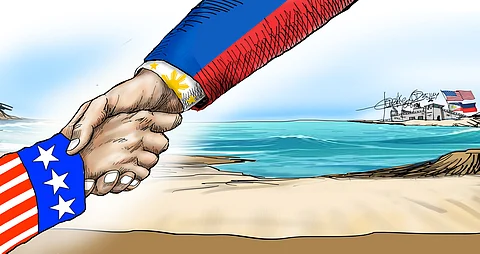
- NEWS
- the EDIT
- COMMENTARY
- BUSINESS
- LIFE
- SHOW
- ACTION
- GLOBAL GOALS
- SNAPS
- DYARYO TIRADA
- MORE

President Ferdinand “Bongbong” Marcos Jr.’s visit to the White House on Tuesday to meet with US President Donald Trump resulted in what many would call a modest win on paper — but a potentially strategic gain in the long run.
The headline: a 1-percent tariff reduction for Philippine exports, from the looming 20 percent down to 19 percent. While Trump called Marcos a “tough negotiator,” critics were quick to point out that the tariff was still two percentage points higher than the 17 percent imposed earlier this year. In this light, it feels more like damage control than a breakthrough.
Still, in the world of diplomacy and trade, optics and positioning matter. Trump’s public praise, coupled with his emphasis that the Philippines remains a “beautiful partner” in the Indo-Pacific, signals a continuing strategic alignment. More importantly, the Philippines avoided the worst-case scenario of a full 20-percent tariff — a rate that would have severely impacted the country’s exports and competitiveness.
The tariff concession, though slim, placed the Philippines in the company of other Southeast Asian na-tions like Indonesia and Vietnam, which recently struck similar deals with the Trump administration. For Marcos Jr., it was a balancing act: assert economic interests, maintain access to the American market, and signal continued alignment with US strategic priorities.
Beyond trade, the meeting cemented defense and military ties. Marcos met with US Defense Secretary Pete Hegseth and Secretary of State Marco Rubio to reaffirm joint commitments under the Enhanced Defense Cooperation Agreement (EDCA). With tensions rising in the South China Sea, the continued US military presence in the Philippines — along with joint patrols and infrastructure development — remains crucial to our national security.
Marcos was also careful to stress that the Philippines remains committed to an “independent foreign policy.” Trump, in his usual candor, said he didn’t mind if the Philippines “gets along with China,” hinting at the nuanced diplomacy Manila must pursue in an increasingly polarized world.
While the 1-percent tariff cut may seem underwhelming to the casual observer, the visit’s broader value lies in geopolitical signaling. Marcos became the first Southeast Asian leader to visit Trump since his return to office — an endorsement of sorts that elevates the Philippines’ role as a key player in the Indo-Pacific chessboard.
There are, of course, caveats. Trade watchers note that the details of the deal remain vague. One senior Philippine official privately expressed disappointment, saying it’s “sad that as an ally, our rate still went up.” Some fear the Philippines gave up too much in exchange for too little.
Even so, diplomacy is often about securing footholds — not finish lines. Marcos’ trip may not have ended with a splashy agreement, but it kept the Philippines firmly in Washington’s good graces, opened room for further negotiation, and shored up military guarantees amid regional uncertainty.
In the end, the trip was a measured success. It wasn’t a windfall, but it was a necessary play on a board where the Philippines must constantly balance economic survival, geopolitical pressure, and national pride.
As with most things in foreign policy, the true benefit may not be in what was signed, but in who showed up to shake hands — and what that handshake signified.
